Despite being a dedicated yogi for many years now, I hadn’t realised until recently how much knowledge I’ve been missing about the proper way to do some of the most basic poses. In the popular 60 minute class format, there isn’t really time for teachers to fully explain the background, correct form and common mistakes associated with each pose, so many of us end up with a kind of just-watch-what-the-teacher-is-doing-and-make-your-body-look-the-same technique without really understanding what we should feel like or be achieving from each movement.
Short of completing teacher training myself (which is most certainly on my bucket list), the best way I’ve discovered for correcting my form has been attending yoga workshops rather than just classes that delve deeper into specific areas. I am lucky enough to have some very talented yogi friends who are not only clever anatomy nerds, but are also passionate about sharing their knowledge with those willing to learn – the lovely sister duo, Laura (@laurattyoga) and Emily (@emilytrimblethompson) Trimble-Thompson, recently held a Stability and Mobility Masterclass focusing on pelvis, spine and shoulders at Ihana Yoga in St Kilda (conveniently near our Matcha Mylkbar).
Among many other things, I was shocked to learn that I have been mistakenly performing 3 of the most common (and seemingly simple) poses!!!! My biggest takeaways:
If you’re quite flexible, it can actually be harder to do less in a pose. Going as far as you can isn’t always the most active way you to do a pose and can in fact be so passive that you lose any of its benefits. That’s why the focus should be on mobility and not just flexibility…
Such wise words! Here are the three that have changed my practice!
1. Downward dog
WRONG: Yep, the most basic of poses that is probably repeated more than any other pose in a flow class. I had thought that being flexible and being able to press downwards to create a swayed lower back at the same time as keeping my heels on the ground was a good thing.
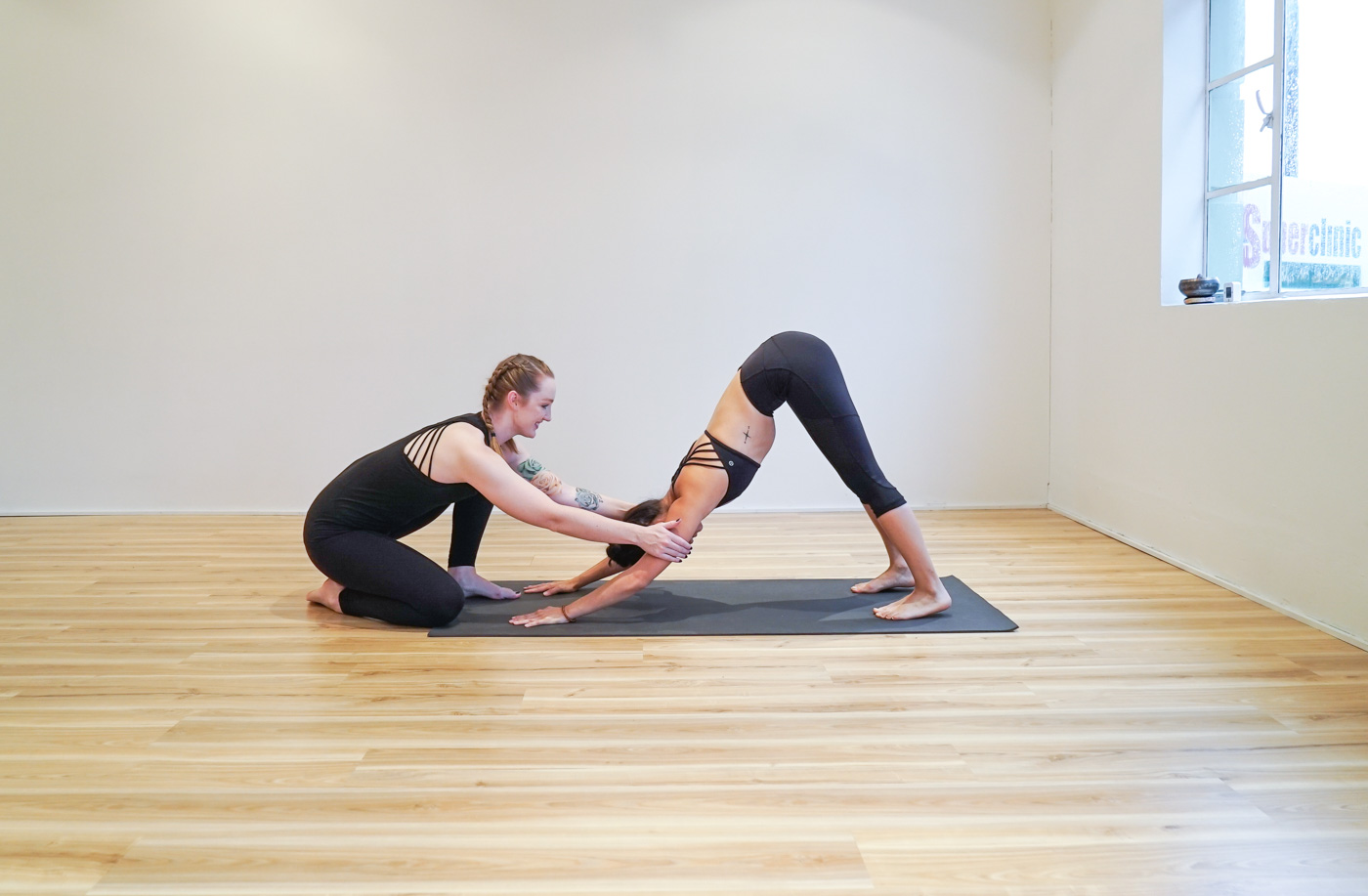
RIGHT: But no! In fact, that was letting my ribcage flare out and my stomach muscles stay inactive. Rather, the downward dog should always be an upside down V or a U (never narrower). My stomach is now activated and my lower back more straightened to create a straight line with my arms.
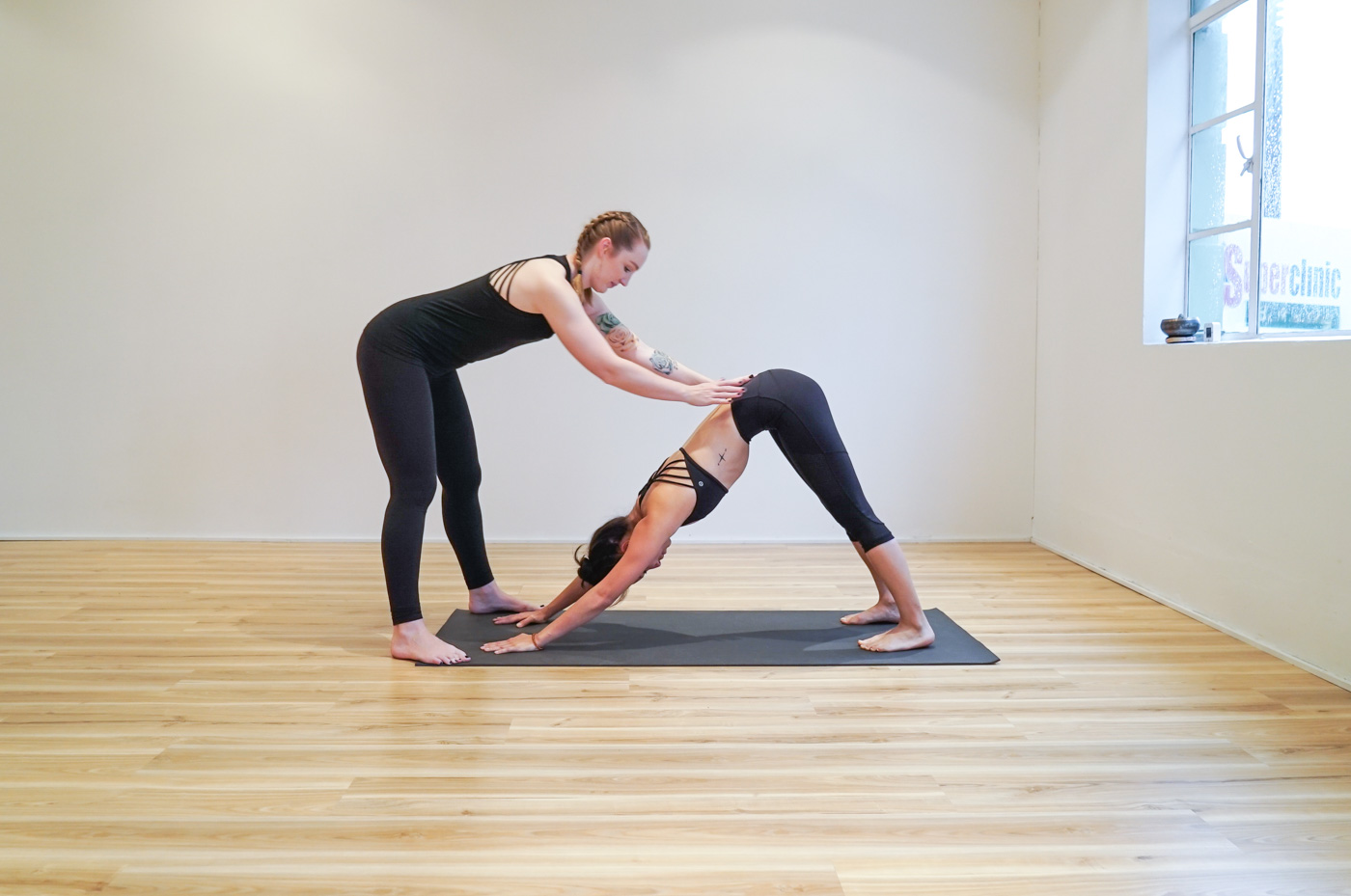
2. Warrior two
WRONG: Another very common pose where my flexibility allowed me to sit very low and just hover there lazily. Stretching forward while keeping low often led me to lean too far forward over my knee leading my pelvis to tilt and putting pressure on my knees.
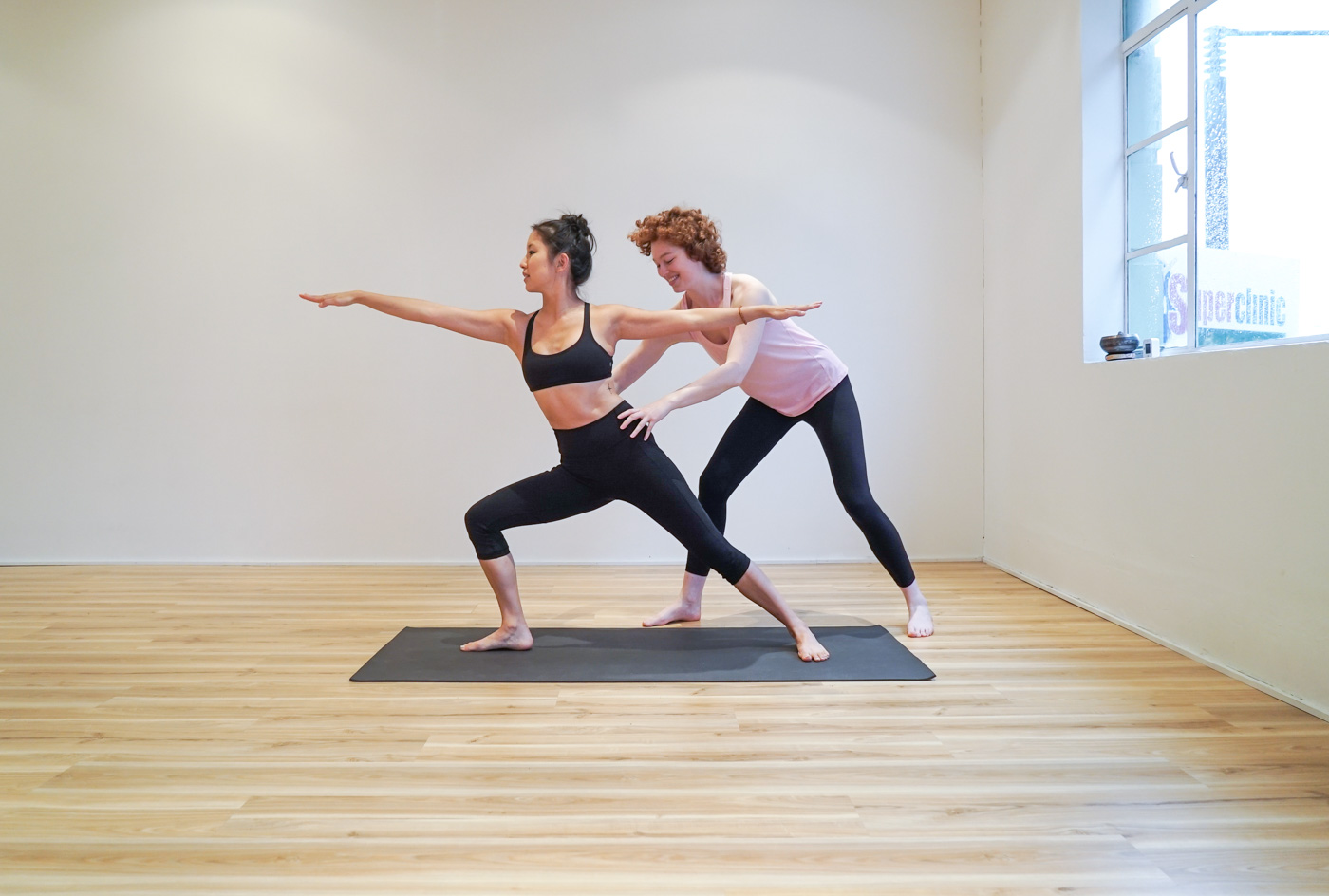
RIGHT: It’s actually harder to NOT go as low as I can and stay there actively with my legs and abs engaged. There is no longer pressure on my knees and my hips and shoulders are in line. My glutes are engaged to stabilise the pelvis (Laura tells me to “imagine you’re trying to stretch/lengthen the mat” as a cue!)
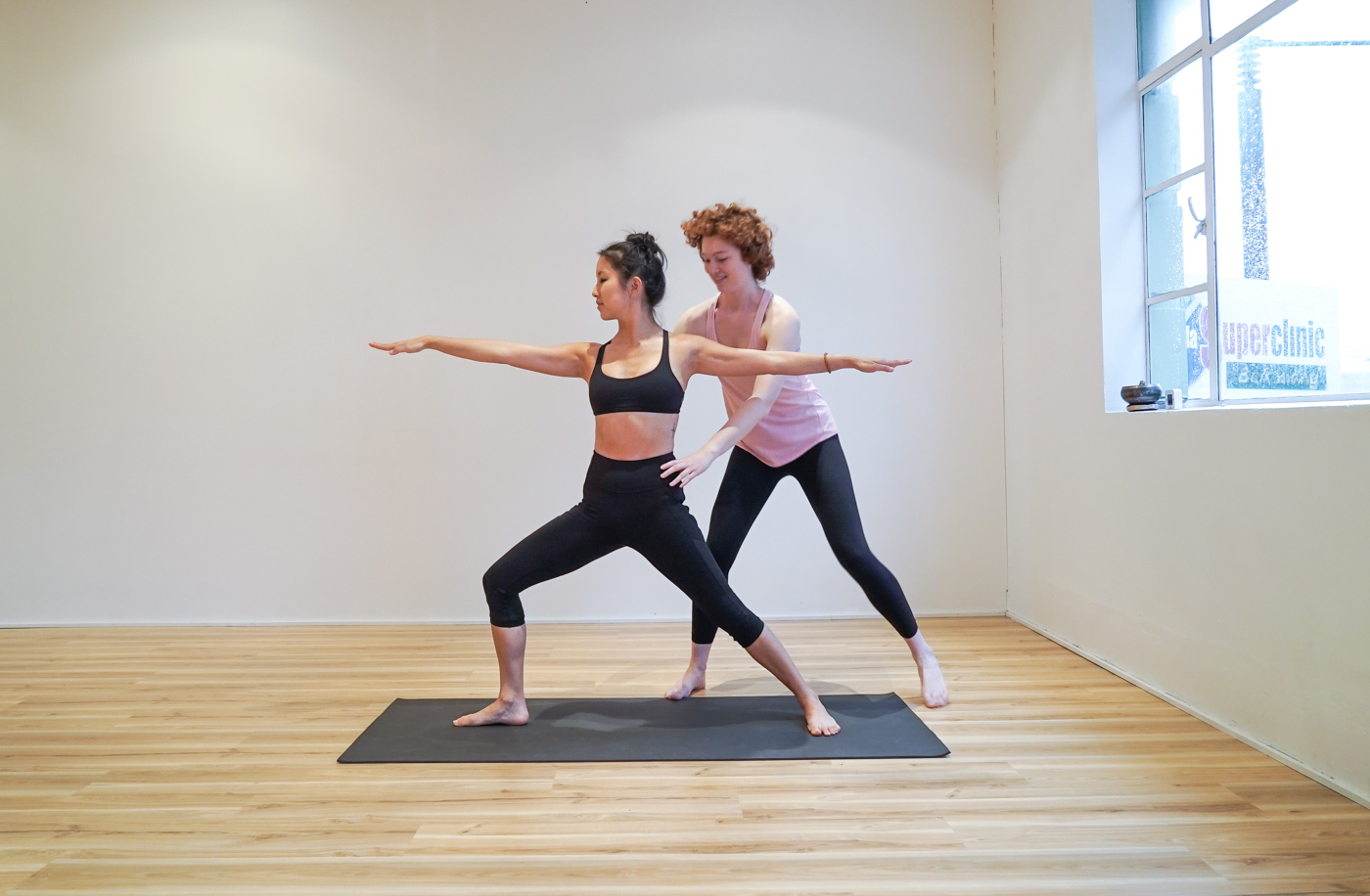
3. Upward dog
WRONG: Oh my goodness, the chaturanga-to-updog transition has always bothered me and often led me to a sore lower back, which I could never understand. There’s a lot of confusion about what should be flexed and what shouldn’t and it all just got too hard, despite this being a major part of a sun salutation. I had been letting my back dip, resting passively into my shoulders so they would rise to my ears, and letting my head drop back completely (then wondering why I had lower back pain). This meant my weight wasn’t over my hands either, creating even more pressure on my lower back to hold up my weight.
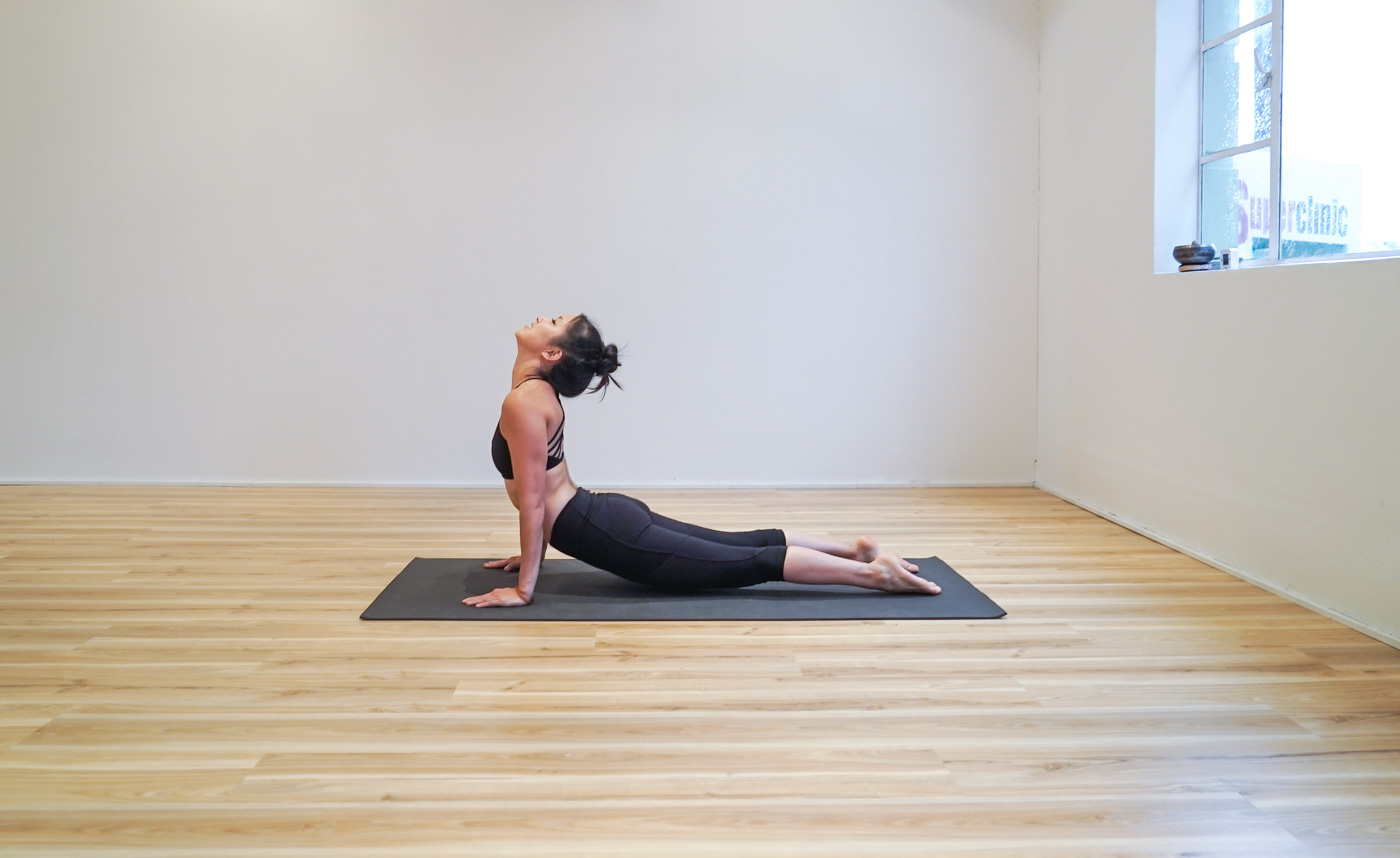
RIGHT: My weight is drawn further forward over my hands with my chest pushing forward, so I am coming up and out of my shoulders instead of sitting into them. With my chest open and weight over my hands, there is much less pressure on my lower back. My glutes are also activated and my hamstrings slightly flexed to keep my legs straight. My belly is engaged to lengthen and support the lower back and move the bend/mobilisation/opening into the upper back. I couldn’t believe how different this pose felt to what I was accustomed to – mind blown!
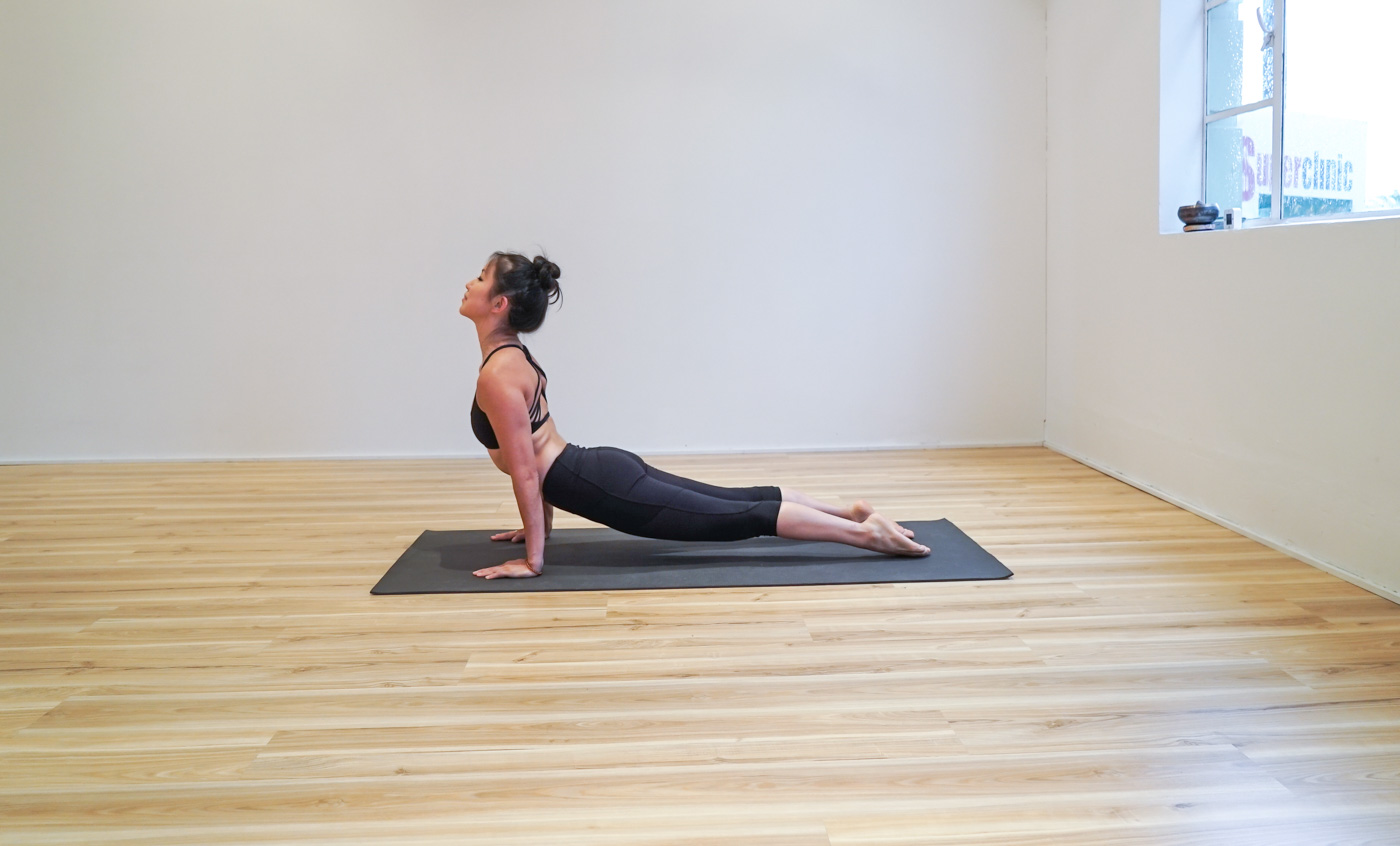
I highly recommend you try out a workshop in your areas of weakness or interest, if you’re interested to learn more about technique and form. It has already revolutionised my practice to know the right way to do the fundamental poses that form the basis of my flow practice. So interesting!
